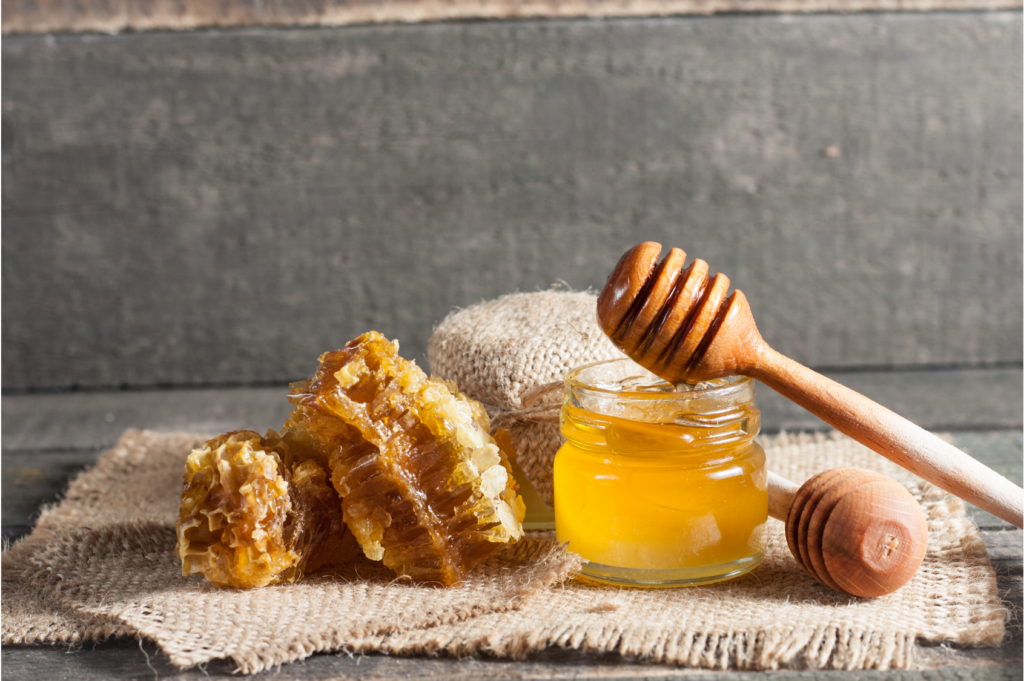By Marj Watkins
My father cherished his half-dozen bee hives. The bees never stung him. He placed some hives in his friend’s orchard, where they helped the fruits to thrive by pollinating the flowers.
Honey is one of the oldest sweeteners in the world. Many variations of honey are cherished around the world, both for their sweetness and because honey is antiseptic. To put it simply, honey kills germs. As a little girl visiting my grandma, Fanny Brunson, I saw it in action when my uncle Royce burned his hand while fixing the tractor. He brought his wounded hand to his mother.
First, grandma plunged his hand into the teapot sitting on the table. The tea was cold and took the heat out of her son’s burned hand. Then, she slathered the hand with honey and tore a strip from her apron to quickly bandage Royce’s hand.
Suzanna says she used honey on her baby’s arm when he reached over a steaming hot pot. His arm blistered immediately, but both the blister and his screams subsided when she put honey on it.
There are many varieties of honey. Buckwheat honey is used in cough syrup. So how do honeybees make honey? They diligently collect the nectar from flowers and carry it to their hives. Those bees are responsible for transforming floral nectar into honey by adding enzymes to the nectar and reducing moisture.
Rich Osborne explained how local, raw honey works to relieve allergies. The bees pick up a smidgeon of pollen, which gets into the honey. It’s just enough so that your body learns how to deal with that allergen in a healthy manner. Then, when you are exposed to larger amounts of the allergen, your body doesn’t feel overwhelmed and go into “attack the intruder” mode – which is what causes the allergic symptoms. You may be able to get raw honey from a Vashon neighbor in season, or you can get local raw honey from Rich at the Waterfront Market at Ruston.
Before honey is ready to sweeten your tea or put on top of your muffin, the honeycomb walls of the hive are removed and put into a spinner. By being rotated rapidly, the spinner separates the liquid from the waxy comb, releasing fructose, glucose, other sugars and water, plus enzymes, minerals, vitamins, and antioxidants, the good-for-you compounds that boost your life span. This is raw honey. Further processing removes some of the nutrients, and sometimes up to 20% of cheaper sugars are added.
Do be careful not to feed raw honey it to babies under a year old, though. About 2% of honey samples contain the type of bacteria – Clostridium botulinum – responsible for producing a neurotoxin that babies’ digestive systems have not yet developed the ability to fight.
Suzanna’s cough syrup:
Cover a slice or two of onion with honey (buckwheat honey is great, but any pure, raw honey will do).
Let this set overnight. The honey draws out the onion juice from the onion and mixes with it, making a nice-tasting cough syrup.

